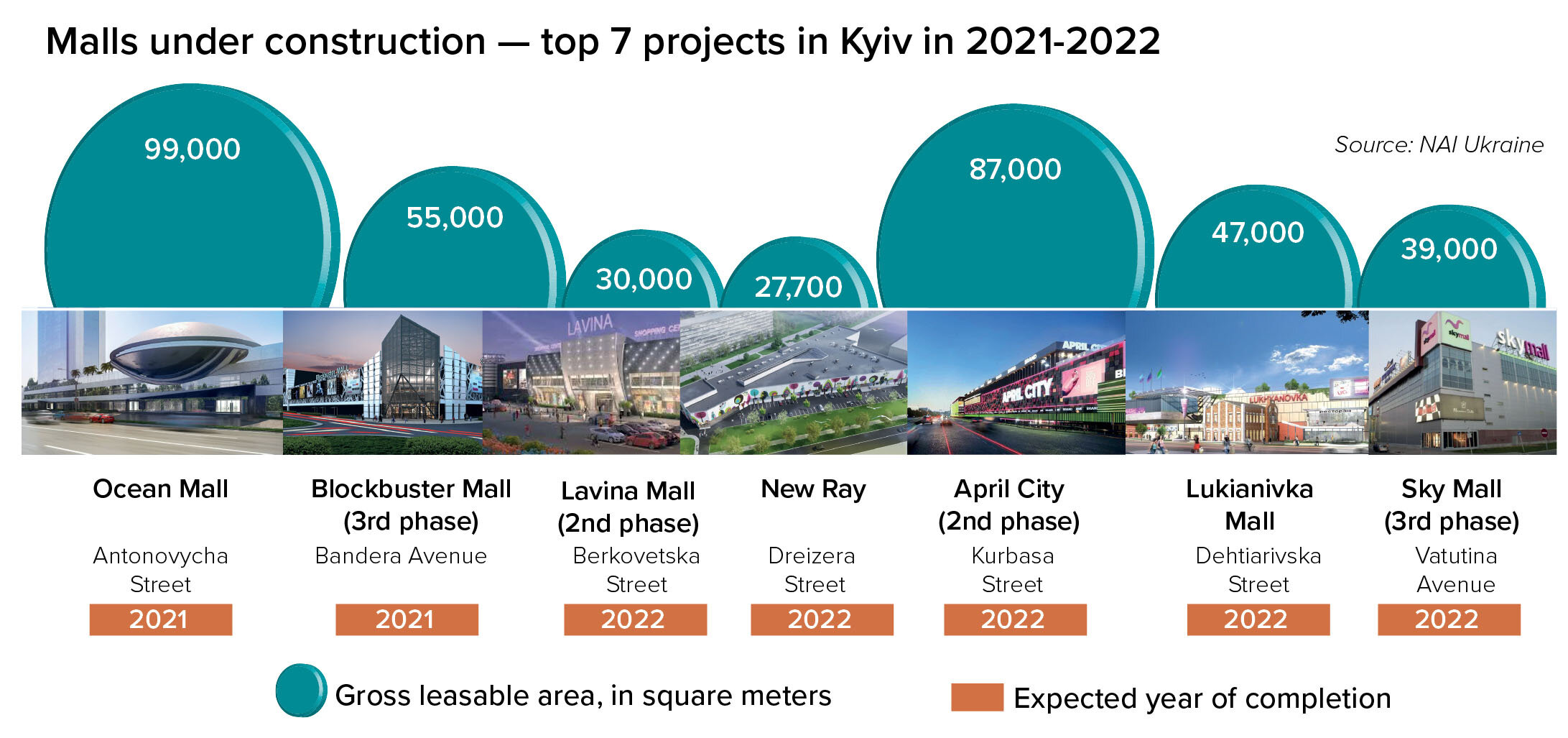Malls keep popping up in Ukraine although quarantine restrictions and the growth of online shopping continue to hit the brick-and-mortar retail sector hard.
Since the beginning of the quarantine, online shopping has grown by 26% while, during the current three-week coronavirus lockdown ending April 10, Ukraine’s shopping malls are mostly empty — with only food stores, banks and pet stores allowed to operate.
In November-December alone, when Ukraine introduced a so-called weekend lockdown for three weeks, shopping centers lost $250 million in rent and other fees and 40% of revenues, according to the Ukrainian Council of Shopping Centers.
Yet developers still see pent-up demand and keep building across the country. By the end of 2022, Ukrainians will see 20 new malls with over 1.8 million square meters of leasable area.
Today Ukraine has 268 malls. Most of them are based in Kyiv, including Lavina Mall, Epicenter K and Ocean Plaza.
At a rate of $20-$25 a month per square meter, calculation shows that Ocean Plaza — one of the capital’s biggest shopping malls with over 70,000 square meters of the gross leasable area — can generate at least $1.75 million a month.
In 2019, the total leasable area of shopping malls accounted for 3.2 million square meters in the country, according to retail management firm Shen. The biggest malls provide shopping areas for global brands like H&M, Zara and IKEA.
And they are profitable.
Investor and retail tycoon Vagif Aliyev earned $61 million in 2020 from Ocean Mall, Mandarin Plaza, Lavina Mall and Blockbuster Mall combined, according to Forbes Ukraine.
Viktor Polishchuk, the owner of the Gulliver shopping mall located in central Kyiv, made $70 million in 2020.
Attendance decrease, sales increase
Customers increasingly buy in malls despite repeated lockdowns. They also tend to spend more money in malls — $620 in four visits per month in 2020 compared to $488 in 2019.
The sales turnover in Ukrainian shopping malls amounted to almost $36 million in September 2020 — an increase of 8.9% compared to the previous year, according to the Ukrainian Trade Guild.
Still, compared to 2019, when Kyiv’s Gulliver and Ocean Plaza alone had collectively 40 million visitors, attendance at shopping malls decreased on average by 26.5% in 2020, according to the Watcom analysts and NAI Ukraine.
Daria Zavadskaya, commercial director of Ocean Plaza, said fewer people went shopping in 2020 because of mass layoffs, low incomes, and rising unemployment. “We are seeing a sharp decline in consumer happiness which makes it difficult for buyers to return to shopping malls,” Zavadskaya told the Kyiv Post.
As a result, rent payments for retailers went down by 10–20% in shopping malls such as Dreamtown, a mall in Kyiv’s district Obolon, Roman Yemets, the mall’s CEO told the Kyiv Post.
However, he believes the mall will soon increase rent. “It’s rather a short-term crisis than a not a long-term situation,” Yemets said.

While large malls have not experienced a significant outflow of visitors, local malls are facing much worse quarantine challenges, because they are usually smaller and have fewer revenue sources like cinemas, indoor water parks, gyms.
Overall, the entertainment sector in malls suffered the most from quarantine restrictions, forbidding people to gather in large numbers in cinemas and bowling alleys. “This sector altogether with restaurants has been damaged by COVID‑19 even more than fashion retailers,” Yemets said.
Still, Zavadskaya remained optimistic for 2021, because such a situation is challenging shopping malls to adapt to their customers and therefore improve. “We understand that consumer preferences will change, but we are ready to adapt,” she said.
